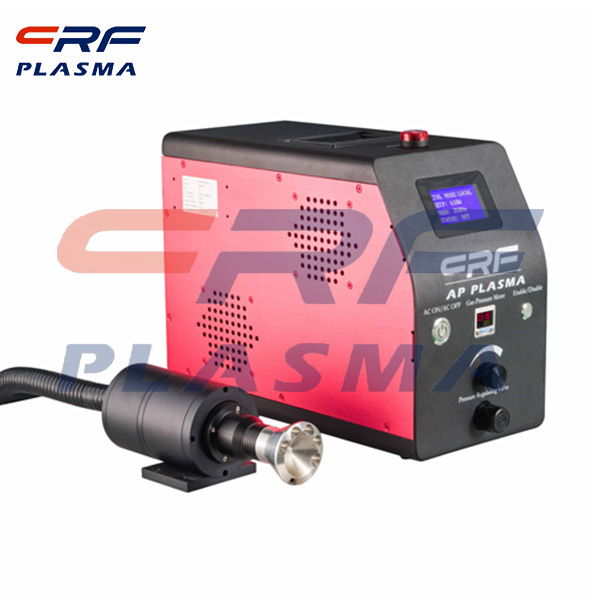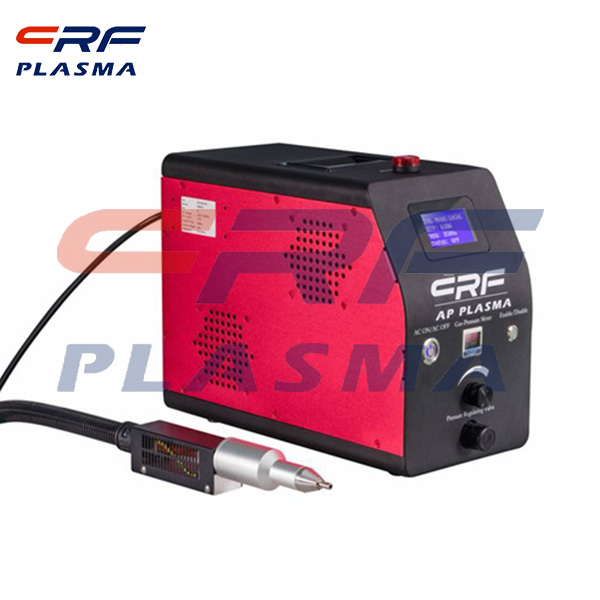
Welcome to Shenzhen Sing Fung Intelligent Manufacturing Co., Ltd.
E-mail:shaobo@sfi-crf.com
Double graphic etching of polysilicon gate for plasma surface treatment machine
- Categories:Industry News
- Author:plasma cleaning machine-surface treatment equipment-CRF plasma machine-Sing Fung Intelligent Manufacturing
- Origin:
- Time of issue:2020-12-02
- Views:
(Summary description)In polysilicon graphic definition, in addition to the characteristic size of the line itself, the graph at the end of the line also needs to be strictly controlled. Different from the center of the line, due to the limitation of yellow light process, the side wall of photoresist at the end of the line is tilted out, and it is etched from three directions when the plasma surface treatment machine etches, so the photoresist recedes rapidly. In this industry, the precision of etching process to the line end graphics is evaluated by the ratio of the characteristic size difference before and after etching and the characteristic size difference before and after etching with the plasma surface processor in the center of the line, which is called line end retraction. In general, the smaller the retraction at the end of the line, the better, indicating that the distortion at the end of the line is controlled within a small range. It is well known that polysilicon gate lines cross the active region to form devices. If the end of the polysilicon gate line falls back too much during the etching process of the plasma surface treatment machine, the gate length will not be enough to cross the active region, and the silicon oxide in the shallow groove isolation area will be damaged in the subsequent process, which will cause the exposed active region as the channel to form damage and cause device failure. It is found that the retraction of the end of the line is closely related to the initial etching process defined by graphic etching, and the retraction performance of the end of the line is very different when the gas is etched with different anti-reflection layers at the bottom. At present, there are mainly HBr/Cl2 and fluorine base gas etched by plasma surface treatment machine. Using the bottom anti-reflection layer etching process of fluorine-based gas, the regression degree of the line end is far less than that of HBr/Cl2 etching process. This is because in the HBr/Cl2 etching process, the VUV will change the surface properties of the photoresist, and the fracture of the photoresist polymer molecules will make the photoresist remelt and shrink, making the regression of the end of the line more violent. Therefore, in the initial etching step of the graphic definition, the use of fluorine-based gas can accurately control the transfer of the graphic. But with miniature device, demand of polysilicon gate 'distance is smaller and smaller, at this moment just by LES has been unable to meet the requirements of process control, the introduction of dual graphics cutting technology is a good way to solve this problem, the double graphics process as early as 2010 years ago have been put forward, samsung technology was at the university of new Mexico lawsuit, since then, double graphics technology invention got rapid development, also in the field of domestic made a lot of layout on the intellectual property rights. The industry has introduced a dual graphics process in the 28nm process to avoid excessive shrinkage of polysilicon line ends. Long line shapes are first formed through the first exposure and etching, often referred to as P1. Then, the second exposure process is made. Sandwich structure process with anti-reflection layer at the bottom containing silicon is generally adopted. In other words, the lower layer is deposited by rotary coating process to achieve the purpose of flattening. Then spin coating intermediate layer containing silicon bottom anti-reflection layer; The exposure process of rotating photoresist and cutting hole. Cutting polysilicon grids by an etching process is often referred to as P2. This dual graphic technique effectively avoids the microform limitation of yellow light exposure in both the length and width of the gate in the first graphic technique. At the same time, through the optimization of etching cutting process, that is, adding gas that can produce heavy polymer into the etching gas of plasma surface treatment machine, the head-to-head distance of polysilicon gate can be reduced to less than 20nm, which meets the need of continuous microminification in the active region. Adopts double graphics etching process, the cutting process of process window is to be considered, usually all graphics cutting process by using the design rules make all fall on the silicon oxide, which in the hard mask cutting hard enough in the steps of etching, in order to achieve the purpose of cutting completely, increase craft work window. However, if there is no design rule to avoid it, that is, if there is an area where both graphics are exposed and the substrate below the polysilicon is designed in an active region, then the over-etching amount should be controlled in the cutting process to avoid the damage of the underlying silicon substrate. When the size is further miniaturized, the depth-width ratio of the cutt
Double graphic etching of polysilicon gate for plasma surface treatment machine
(Summary description)In polysilicon graphic definition, in addition to the characteristic size of the line itself, the graph at the end of the line also needs to be strictly controlled. Different from the center of the line, due to the limitation of yellow light process, the side wall of photoresist at the end of the line is tilted out, and it is etched from three directions when the plasma surface treatment machine etches, so the photoresist recedes rapidly. In this industry, the precision of etching process to the line end graphics is evaluated by the ratio of the characteristic size difference before and after etching and the characteristic size difference before and after etching with the plasma surface processor in the center of the line, which is called line end retraction.
In general, the smaller the retraction at the end of the line, the better, indicating that the distortion at the end of the line is controlled within a small range. It is well known that polysilicon gate lines cross the active region to form devices. If the end of the polysilicon gate line falls back too much during the etching process of the plasma surface treatment machine, the gate length will not be enough to cross the active region, and the silicon oxide in the shallow groove isolation area will be damaged in the subsequent process, which will cause the exposed active region as the channel to form damage and cause device failure.
It is found that the retraction of the end of the line is closely related to the initial etching process defined by graphic etching, and the retraction performance of the end of the line is very different when the gas is etched with different anti-reflection layers at the bottom. At present, there are mainly HBr/Cl2 and fluorine base gas etched by plasma surface treatment machine. Using the bottom anti-reflection layer etching process of fluorine-based gas, the regression degree of the line end is far less than that of HBr/Cl2 etching process. This is because in the HBr/Cl2 etching process, the VUV will change the surface properties of the photoresist, and the fracture of the photoresist polymer molecules will make the photoresist remelt and shrink, making the regression of the end of the line more violent. Therefore, in the initial etching step of the graphic definition, the use of fluorine-based gas can accurately control the transfer of the graphic. But with miniature device, demand of polysilicon gate 'distance is smaller and smaller, at this moment just by LES has been unable to meet the requirements of process control, the introduction of dual graphics cutting technology is a good way to solve this problem, the double graphics process as early as 2010 years ago have been put forward, samsung technology was at the university of new Mexico lawsuit, since then, double graphics technology invention got rapid development, also in the field of domestic made a lot of layout on the intellectual property rights.
The industry has introduced a dual graphics process in the 28nm process to avoid excessive shrinkage of polysilicon line ends. Long line shapes are first formed through the first exposure and etching, often referred to as P1. Then, the second exposure process is made. Sandwich structure process with anti-reflection layer at the bottom containing silicon is generally adopted. In other words, the lower layer is deposited by rotary coating process to achieve the purpose of flattening. Then spin coating intermediate layer containing silicon bottom anti-reflection layer; The exposure process of rotating photoresist and cutting hole. Cutting polysilicon grids by an etching process is often referred to as P2. This dual graphic technique effectively avoids the microform limitation of yellow light exposure in both the length and width of the gate in the first graphic technique. At the same time, through the optimization of etching cutting process, that is, adding gas that can produce heavy polymer into the etching gas of plasma surface treatment machine, the head-to-head distance of polysilicon gate can be reduced to less than 20nm, which meets the need of continuous microminification in the active region.
Adopts double graphics etching process, the cutting process of process window is to be considered, usually all graphics cutting process by using the design rules make all fall on the silicon oxide, which in the hard mask cutting hard enough in the steps of etching, in order to achieve the purpose of cutting completely, increase craft work window. However, if there is no design rule to avoid it, that is, if there is an area where both graphics are exposed and the substrate below the polysilicon is designed in an active region, then the over-etching amount should be controlled in the cutting process to avoid the damage of the underlying silicon substrate. When the size is further miniaturized, the depth-width ratio of the cutt
- Categories:Industry News
- Author:plasma cleaning machine-surface treatment equipment-CRF plasma machine-Sing Fung Intelligent Manufacturing
- Origin:
- Time of issue:2020-12-02 09:22
- Views:
Double graphic etching of polysilicon gate for plasma surface treatment machine:
In polysilicon graphic definition, in addition to the characteristic size of the line itself, the graph at the end of the line also needs to be strictly controlled. Different from the center of the line, due to the limitation of yellow light process, the side wall of photoresist at the end of the line is tilted out, and it is etched from three directions when the plasma surface treatment machine etches, so the photoresist recedes rapidly. In this industry, the precision of etching process to the line end graphics is evaluated by the ratio of the characteristic size difference before and after etching and the characteristic size difference before and after etching with the plasma surface processor in the center of the line, which is called line end retraction.
In general, the smaller the retraction at the end of the line, the better, indicating that the distortion at the end of the line is controlled within a small range. It is well known that polysilicon gate lines cross the active region to form devices. If the end of the polysilicon gate line falls back too much during the etching process of the plasma surface treatment machine, the gate length will not be enough to cross the active region, and the silicon oxide in the shallow groove isolation area will be damaged in the subsequent process, which will cause the exposed active region as the channel to form damage and cause device failure.
It is found that the retraction of the end of the line is closely related to the initial etching process defined by graphic etching, and the retraction performance of the end of the line is very different when the gas is etched with different anti-reflection layers at the bottom. At present, there are mainly HBr/Cl2 and fluorine base gas etched by plasma surface treatment machine. Using the bottom anti-reflection layer etching process of fluorine-based gas, the regression degree of the line end is far less than that of HBr/Cl2 etching process. This is because in the HBr/Cl2 etching process, the VUV will change the surface properties of the photoresist, and the fracture of the photoresist polymer molecules will make the photoresist remelt and shrink, making the regression of the end of the line more violent. Therefore, in the initial etching step of the graphic definition, the use of fluorine-based gas can accurately control the transfer of the graphic. But with miniature device, demand of polysilicon gate 'distance is smaller and smaller, at this moment just by LES has been unable to meet the requirements of process control, the introduction of dual graphics cutting technology is a good way to solve this problem, the double graphics process as early as 2010 years ago have been put forward, samsung technology was at the university of new Mexico lawsuit, since then, double graphics technology invention got rapid development, also in the field of domestic made a lot of layout on the intellectual property rights.
The industry has introduced a dual graphics process in the 28nm process to avoid excessive shrinkage of polysilicon line ends. Long line shapes are first formed through the first exposure and etching, often referred to as P1. Then, the second exposure process is made. Sandwich structure process with anti-reflection layer at the bottom containing silicon is generally adopted. In other words, the lower layer is deposited by rotary coating process to achieve the purpose of flattening. Then spin coating intermediate layer containing silicon bottom anti-reflection layer; The exposure process of rotating photoresist and cutting hole. Cutting polysilicon grids by an etching process is often referred to as P2. This dual graphic technique effectively avoids the microform limitation of yellow light exposure in both the length and width of the gate in the first graphic technique. At the same time, through the optimization of etching cutting process, that is, adding gas that can produce heavy polymer into the etching gas of plasma surface treatment machine, the head-to-head distance of polysilicon gate can be reduced to less than 20nm, which meets the need of continuous microminification in the active region.
Adopts double graphics etching process, the cutting process of process window is to be considered, usually all graphics cutting process by using the design rules make all fall on the silicon oxide, which in the hard mask cutting hard enough in the steps of etching, in order to achieve the purpose of cutting completely, increase craft work window. However, if there is no design rule to avoid it, that is, if there is an area where both graphics are exposed and the substrate below the polysilicon is designed in an active region, then the over-etching amount should be controlled in the cutting process to avoid the damage of the underlying silicon substrate. When the size is further miniaturized, the depth-width ratio of the cutting process is further increased, which adds a lot of challenges to the cleaning process after the plasma surface treatment machine dry etching. In more advanced processes, the double graphics, the placement of the double graphics steps, and the filling materials will be changed.

Scan the QR code to read on your phone

TEL:0755-3367 3020 / 0755-3367 3019

E-mail:sales-sfi@sfi-crf.com

ADD:Mabao Industrial Zone, Huangpu, Baoan District, Shenzhen


















